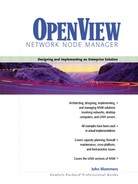Router Interfaces and DNS
A router is a multihomed device because it has multiple network adapters. A file server with two fast Ethernet adapters is another example of a multihomed device. Each network adapter is typically assigned an IP address on a different subnet. You can reach a multihomed device using any one of the network adapters by specifying the IP address. For example, suppose the router named myrouter has two network adapters with the IP addresses 15.24.44.65 and 192.6.173.101. You can log in to myrouter using any of these commands:
telnet 15.24.44.65 telnet 192.6.173.101 telnet myrouter
You normally don’t want to bother specifying the IP address of one of the adapters. If adapter 15.24.44.65 is down, then the telnet command to that address will fail to reach the router.
DNS is designed to handle multihomed devices. nslookup is a command line interface for testing DNS. If you type in the command
nslookup myrouter
then nslookup will return a list of IP addresses. All interfaces should have the same name as the router.
Note that it is not uncommon for web servers to have DNS records for addresses related to logical nodes. NNM tends to provide a confusing representation in such cases.
Some router interfaces such as HSSI (high-speed serial interface) are configured with subinterfaces that have IP addresses assigned to them. Sometimes a single router adapter is assigned one or more secondary IP addresses. Routers are sometimes given a unique low-numbered internal loopback IP address. All these logical interfaces should have the same name as the router. This is just good practice for the proper operation of NNM. Many sites do not adhere to this practice and name each interface uniquely.
One name for all router interfaces is a wonderful innovation. But how do you know which IP address you’re going to use when you try to telnet to myrouter? Depending on which version you are running, DNS returns its list of IP addresses according to one of the following rules:
Return the “nearest” IP address first
Return the same fixed IP address list
Return a round-robin list of IP addresses
NNM works properly when DNS returns the same fixed list of IP addresses. Note that some DNS implementations truncate very long lists of IP addresses (which require more than 512 bytes in the packet). This is problematic with more current versions of DNS that must verify that the forward and reverse lookups are consistent before returning a result.
A network manager often needs to access a router because one or more interfaces are down. If the telnet command is used how do you know which interface you’re going to reach? The answer is that telnet and ftp are DNS-aware. This means that they understand when a list of IP addresses is returned for a name lookup. Thus, these commands will try each interface in the list until contact with the router is made.
DNS is well-suited for multihomed devices.
